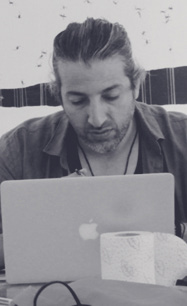




Project's Concept
The city of peace, Bethlehem, which spreads love to the world and receives pilgrims throughout the year, suddenly witnessed a great silence. In fact, it was the first Palestinian city that saw the spread of COVID-19, which soon turned it into a ghost town when it closed its gates, villages and refugee camps. After the pandemic outbreak, life in Bethlehem was subjected to monitoring and inspection, much like other cities around the world. While the pandemic has intensified each day, our lives became confined to the notions of life and death. In this context, the colour black may symbolise the death of the young and old due to the pandemic, whereas the colour white could symbolise medical staff, patients and those who have recovered.
The “City of Peace” project showcases Bethlehem’s reality of siege, occupation and the apartheid wall on one side, and the strength to confront these circumstances the other. It also sheds light on the pandemic, constituting yet another tragedy for the city where death seems to have prevailed, as many who were infected with the virus lost their lives.
The project adopted a research-based approach that documents coronavirus-related developments and their impact on the city. Bethlehem fell hostage to pandemic-related events, figures and outbreaks, and sometimes opened its doors cautiously, while at other times it was in a complete lockdown. This led to the crippling of life and the reign of silence. It also led to tensions, boredom, protests and the emergence of conflicting viewpoints regarding this subject, especially since many people doubted the existence of this pandemic and saw it as merely a political event and/or a fabricated disease.
Bethlehem was one of the first Palestinian areas that witnessed the COVID-19 pandemic. Therefore, people from different areas were obsessively watching its developments and became “overcautious” when dealing with Bethlehemites in fear of contracting the disease. However, there was a change in convictions and opinions after the virus’s emergence in other areas.
The displayed picture aims to highlight the COVID-19 reality and its relation to Bethlehem’s political situation. In this respect, the pandemic and the Israeli occupation are both considered life-threatening dangers that need to be confronted and stopped.

Monther Jawabreh was born in Bethlehem in 1976 and grew up in al Aroob refugee camp. In the last few years, Jawabreh has developed new readings for his artwork based on his understanding of construction and deconstruction and has transformed his completed works between 1998–2018 by shredding and carving them into new pieces; breaking down the emotional and symbolic temporal and nostalgic aspects and refunnelling them again into an experimental work. In other words, Jawabreh recycles the rational and inherent energy that lies in previously dissected works and transforms them into new creations.
Jawabreh has participated in many artistic residencies around the world, including the the Cité Internationale des Arts in Paris, Villa des Arts in Morocco and Sadika Art Exhibition Space in Tunisia, which inspired important changes in his artistic journey and urged him to use different compositional and multimedia tools, especially the performance arts that express and address political and humanitarian issues through the body’s energy.
Jawabreh’s participation in the film Ghost Hunting is an important milestone in his professional life. This film exemplified how far he has come on the technical level, and the time and effort he invested in fine-tuning a work charged with emotional and violent paradoxes.
Jawabreh has showed his work in several exhibitions around the world, such as Palestine, Germany, Morocco, Lebanon, Tunisia and Jordan, in addition to several other collective exhibitions in more than 20 countries. He also won two international awards, including Dacca’s Asian Biennale in 2018 for his work “Elevation”.